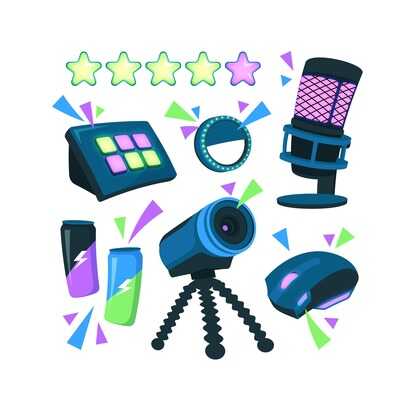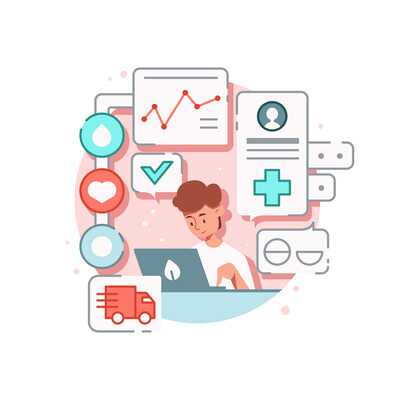10 Mind-Blowing Technologies That Will Shape the Future
Imagine a world where artificial intelligence, smart homes, and virtual reality become an integral part of our daily lives. The rapid advancement of technology has paved the way for numerous groundbreaking innovations that will shape the future in unimaginable ways. In this article, we will explore ten mind-blowing technologies that are poised to revolutionize various industries and transform the world as we know it. The future is brimming with possibilities, thanks to the relentless pursuit of technological advancements. Here, we will delve into ten remarkable technologies that hold the key to an exciting future, from AI and IoT to blockchain and renewable energy. Let’s dive in and explore how these innovations will impact our lives. Artificial Intelligence, or AI, is at the forefront of technological innovation. Its ability to mimic human intelligence and perform complex tasks has opened up new horizons in various fields. In the healthcare sector, AI is revolutionizing diagnostics, drug discovery, and patient care. Medical professionals can now leverage AI algorithms to analyze vast amounts of patient data and provide accurate diagnoses. Furthermore, AI-powered robotic surgeries are enhancing precision and reducing recovery time. Self-driving cars and autonomous vehicles are becoming a reality, thanks to AI. These vehicles rely on advanced algorithms and sensors to navigate roads safely, reducing the risk of accidents and revolutionizing the transportation industry. The Internet of Things, or IoT, refers to the interconnection of everyday objects through the internet. This technology enables seamless communication and data exchange between devices, leading to improved efficiency and convenience. IoT has transformed traditional houses into smart homes. With IoT-enabled devices like smart thermostats, lighting systems, and security cameras, homeowners can control and monitor their homes remotely, enhancing comfort, security, and energy efficiency. IoT extends beyond homes to create connected cities. Smart sensors and infrastructure enable efficient resource management, traffic optimization, and environmental monitoring. Connected cities promise a sustainable and technologically advanced future. Blockchain, the underlying technology behind cryptocurrencies like Bitcoin, has immense potential beyond digital currencies. Its decentralized and secure nature offers various applications in sectors such as finance, supply chain management, and data security. Cryptocurrencies are transforming the financial landscape. With blockchain technology, transactions become faster, more secure, and transparent. Cryptocurrencies offer new avenues for investment and have the potential to revolutionize traditional banking systems. Blockchain ensures traceability and transparency in supply chains. It allows businesses and consumers to track products from the point of origin to the end consumer, minimizing fraud, counterfeiting, and improving overall efficiency. Virtual Reality, or VR, offers immersive experiences that transport users to virtual worlds. It has gained significant traction in various industries, promising unique opportunities for entertainment, training, and more. VR gaming has taken interactive experiences to unprecedented levels. Players can now immerse themselves in lifelike virtual environments, blurring the lines between reality and the digital realm. VR also revolutionizes the entertainment industry, enabling immersive movies and virtual concerts. VR is revolutionizing training and simulation across industries such as aviation, healthcare, and military. Simulated environments allow trainees to practice complex tasks in a safe and controlled setting, leading to enhanced learning outcomes and reduced risks. Augmented Reality, or AR, overlays digital content onto the real world, enhancing the user’s perception and interaction with their environment. AR has the potential to transform various sectors, from industrial applications to retail and marketing. AR assists technicians and engineers by providing real-time information and guidance during complex tasks. It can improve productivity, reduce errors, and enable remote collaboration, revolutionizing industries such as manufacturing and maintenance. AR enhances customer experiences in the retail sector. Virtual try-on features allow shoppers to visualize products before making a purchase, while AR marketing campaigns create interactive and engaging advertisements, captivating audiences and driving sales.
Technologies are the tools that enable us to shape a brighter future for generations to come.
– Samantha Turner Robotics is advancing rapidly, offering innovative solutions to automate tasks and augment human capabilities in various domains. Robots are revolutionizing manufacturing by automating repetitive and labor-intensive tasks. With increased precision and efficiency, robots enhance production speed and quality, ultimately reducing costs and improving overall productivity. Robotic assistants are becoming more prevalent in homes, hospitals, and other settings. These robots can assist with daily tasks, provide companionship, and even perform complex medical procedures. They offer support and improve the quality of life for individuals across different age groups. Biotechnology leverages biological systems and processes to develop innovative solutions in healthcare, agriculture, and environmental sustainability. Genetic engineering enables scientists to modify organisms’ genetic material, opening up possibilities for personalized medicine, disease prevention, and improved crop yields. This technology has the potential to revolutionize healthcare and food production. With advancements in biotechnology, personalized medicine is gaining momentum. By analyzing an individual’s genetic makeup, doctors can tailor treatment plans to specific needs, increasing the effectiveness and minimizing side effects. Renewable energy sources are gaining traction as sustainable alternatives to fossil fuels, offering a greener and more environmentally friendly future. Solar power harnesses energy from the sun and converts it into electricity. With advancements in solar panel technology and increased accessibility, solar energy is becoming a viable option for powering homes and businesses, reducing dependence on traditional energy sources. Wind power utilizes the kinetic energy of wind to generate electricity. As wind turbine technology improves, wind power becomes an increasingly important contributor to the global energy mix, promoting sustainability and reducing carbon emissions. The future is being shaped by remarkable technologies that have the power to revolutionize our lives. From artificial intelligence and blockchain to virtual and augmented reality, these innovations offer unprecedented opportunities and challenges. Embracing these technologies and their potential for positive impact is crucial as we navigate the future.Introduction
Artificial Intelligence (AI)
AI in Healthcare
AI in Transportation
Internet of Things (IoT)
Smart Homes
Connected Cities
Blockchain
Cryptocurrency
Supply Chain Management



Virtual Reality (VR)
Gaming and Entertainment
Training and Simulation
Augmented Reality (AR)
Industrial Applications
Retail and Marketing
Robotics
Automation in Manufacturing
Robotic Assistants
Biotechnology
Genetic Engineering
Personalized Medicine
Renewable Energy
Solar Power
Wind Power

Conclusion













































